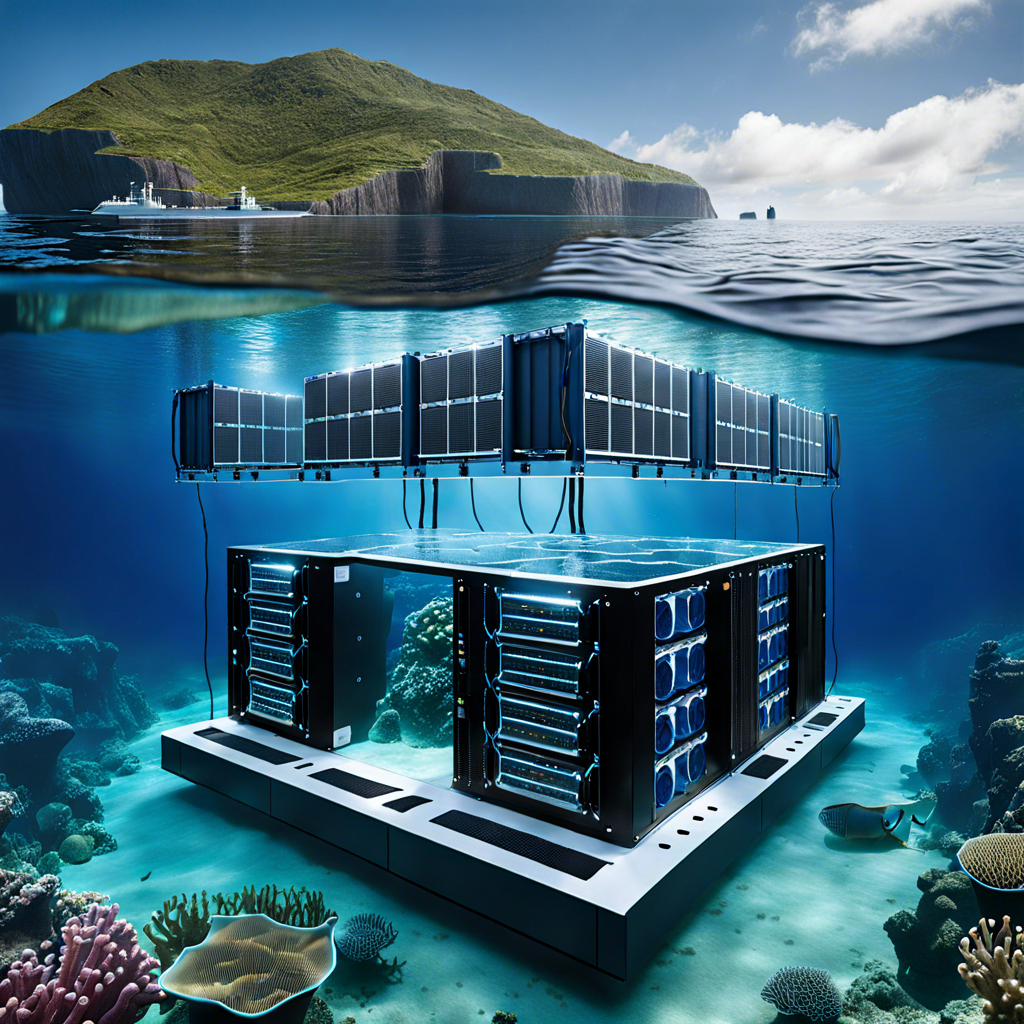There is a critical importance in data center sustainability. With the exponential growth in digital media storage and distribution, data centers face rising energy demands. This article guides you in implementing renewable energy and efficiency strategies to reduce your data center’s environmental impact. Analyze the push toward renewable energy sources and energy-efficient operations. Stay ahead of industry trends and learn how to make data centers part of the sustainability solution. Discover how to take practical steps to improve efficiency, tap into renewable energy, and position the company as an environmental leader. Keep reading to future-proof your data center against climbing energy costs and evolving climate policies. With insight into industry best practices, you can drive change in your organization and pave the way for a greener, more resilient IT infrastructure.
The Growing Need for Sustainable Data Centers
Increasing Data Demands
- The digital age has ushered in an era of unprecedented data growth. As more businesses and individuals rely on cloud-based services, media streaming, and online storage, the demand for data centers has skyrocketed. However, this surge in data consumption has a significant environmental impact.
Energy Consumption Concerns
- Data centers are energy-intensive facilities that consume vast amounts of electricity to power servers, cooling systems, and other infrastructure. This energy consumption not only contributes to greenhouse gas emissions but also strains the power grid, leading to higher costs and potential outages.
Renewable Energy Solutions
- To mitigate these concerns, many data center operators are turning to sustainable practices, particularly the use of renewable energy sources. By harnessing the power of wind, solar, or hydroelectric energy, data centers can significantly reduce their carbon footprint and contribute to a more sustainable future.
Efficiency Improvements
- In addition to renewable energy, data centers are implementing various energy efficiency measures. These include optimizing cooling systems, utilizing energy-efficient hardware, and implementing advanced power management strategies. By reducing energy waste, data centers can lower their operational costs while minimizing their environmental impact.
Future-Proofing Operations
- Embracing sustainable practices is not only an ethical imperative but also a strategic business decision. As environmental regulations tighten and consumer demand for eco-friendly services grows, data centers that prioritize sustainability will be better positioned to future-proof their operations and remain competitive in the long run.
Industry Collaboration
- Achieving true sustainability in the data center industry requires collaboration among operators, technology providers, and policymakers. By working together to develop and implement best practices, standardize metrics, and share knowledge, the industry can accelerate the transition toward a more sustainable future for data storage and processing.
Improving Energy Efficiency in Data Centers
Optimizing Power Usage
- Enhancing energy efficiency in data centers is pivotal for reducing operational costs and minimizing environmental impact. One of the primary strategies involves optimizing power usage through advanced cooling techniques and strategic equipment placement. Implementing hot and cold aisle containment can significantly improve cooling efficiency by separating the exhaust air from the air-conditioned supply.
Virtualization and Consolidation
- Virtualization and server consolidation play a crucial role in maximizing energy efficiency. By running multiple virtual machines on a single physical server, organizations can reduce the number of servers required, consequently lowering energy consumption for powering and cooling the infrastructure.
Efficient Power Supplies
- Upgrading to energy-efficient power supplies can yield substantial energy savings. Modern power supplies with higher efficiency ratings convert more incoming AC power into usable DC power, minimizing energy losses during conversion. This simple hardware upgrade can have a significant impact on overall energy consumption.
Monitoring and Automation
- Implementing comprehensive monitoring and automation systems enables data centers to identify and address inefficiencies proactively. Real-time monitoring of power usage, cooling requirements, and server utilization can help optimize resource allocation and identify opportunities for energy-saving adjustments. Automated load balancing and workload distribution further enhance efficiency by ensuring optimal resource utilization.
Renewable Energy Integration
- Incorporating renewable energy sources, such as solar or wind power, into data center operations can significantly reduce the reliance on non-renewable energy sources. Many leading data center providers are actively investing in on-site renewable energy generation or purchasing renewable energy credits to offset their carbon footprint.
By adopting these strategies, data centers can significantly improve their energy efficiency, reduce operational costs, and contribute to a more sustainable future for the industry and the planet.
Utilizing Renewable Energy Sources
Embracing Green Power
- As data centers grapple with mounting energy demands, embracing renewable sources has emerged as a pivotal strategy. This shift not only minimizes environmental impact but also bolsters long-term sustainability and cost efficiency.
Harnessing Solar Potential
- Solar energy stands as a clean and abundant power source. By strategically deploying solar panel arrays, data centers can harness the sun’s rays to generate electricity. This approach reduces reliance on fossil fuels while capitalizing on a renewable resource.
Wind Power: A Promising Frontier
- Wind turbines offer another compelling renewable option for data centers. Establishing wind farms in suitable locations can generate substantial amounts of clean electricity, further diversifying the energy mix and mitigating carbon emissions.
Geothermal Exploration
- Tapping into the Earth’s internal heat through geothermal energy systems presents an intriguing possibility. While requiring specialized infrastructure, this renewable source can provide a consistent and environmentally friendly power supply for data centers.
Hydroelectric Opportunities
- In regions with suitable water resources, hydroelectric power plants can be leveraged to meet data center energy needs. By harnessing the kinetic energy of flowing water, these facilities can generate renewable electricity on a large scale.
Hybrid Solutions for Optimal Performance
- Integrating multiple renewable sources through hybrid systems can optimize energy production and ensure uninterrupted operations. This approach combines the strengths of various technologies, mitigating intermittency issues and enhancing overall efficiency.
By actively pursuing renewable energy alternatives, data centers can significantly reduce their carbon footprint while positioning themselves as environmentally responsible entities. This commitment not only aligns with sustainability goals but also fosters long-term resilience and cost-effectiveness in an increasingly eco-conscious digital landscape.
Case Studies of Sustainable Data Centers

Google’s Data Center Sustainability Efforts
- Google has been a pioneer in sustainable data center practices. Their facilities utilize advanced cooling techniques, such as using recycled water for cooling and implementing machine learning to optimize temperatures. Additionally, Google has committed to powering its operations with 100% renewable energy and achieving net-zero emissions by 2030.
Meta’s Renewable Energy Investments
- Meta (formerly Facebook) has made significant investments in renewable energy projects to power its data centers. As of 2021, the company’s global operations are supported by 100% renewable energy sources. Meta has also implemented cutting-edge cooling systems and energy-efficient hardware designs to reduce its overall energy footprint.
Microsoft’s Underwater Data Center
- In a unique approach, Microsoft has experimented with an underwater data center concept called Project Natick. These underwater facilities can potentially leverage the ocean’s natural cooling capabilities, reducing the need for energy-intensive cooling systems. The project also explores the feasibility of co-locating data centers near coastal cities, minimizing data transmission distances.
Apple’s Renewable Energy Initiatives
- Apple’s data centers are powered entirely by renewable energy sources, including solar, wind, and low-impact hydroelectric projects. The company has also implemented innovative energy storage solutions, such as battery facilities, to ensure a consistent and reliable supply of renewable energy.
Amazon’s Commitment to Sustainability
- Amazon Web Services (AWS) has set ambitious goals to power its operations with 100% renewable energy by 2025. The company has invested in various renewable energy projects, including wind and solar farms, and has implemented energy-efficient practices in its data centers, such as using liquid cooling systems and optimizing airflow.
These case studies demonstrate the significant efforts made by leading technology companies to embrace sustainable practices in their data center operations. By prioritizing energy efficiency, renewable energy sources, and innovative cooling technologies, these companies are paving the way for a more environmentally friendly future in the data center industry.
The Future of Sustainability in Data Centers for Media Storage
Data centers that store and process large media files face significant energy demands. As our digital world expands, ensuring sustainability in these facilities is crucial for reducing environmental impact. The future promises exciting advancements in eco-friendly practices.
Optimizing Energy Efficiency
- One key focus is maximizing energy efficiency through improved cooling systems and server configurations. Innovative techniques like liquid cooling can drastically cut energy consumption compared to traditional air-cooling methods. Additionally, AI and machine learning algorithms will play a vital role in optimizing workloads and minimizing wasted resources.
Transitioning to Renewable Energy
- Supplementing energy needs with renewable sources like solar, wind, and hydroelectric power is another priority. Data centers may increasingly rely on on-site renewable installations or partner with green energy providers. Energy storage solutions will enable facilities to operate purely on renewable energy around the clock.
Sustainable Design and Construction
- From the ground up, sustainable data center design incorporates eco-friendly materials, water conservation measures, and landscaping that reduces the heat island effect. Modular construction methods can drastically cut construction waste. The aim is to create facilities with a minimal environmental footprint throughout their lifecycle.
Driving Innovation Through Policy
- Government policies incentivizing sustainability and setting stringent efficiency standards will accelerate green data center adoption. Cross-industry collaboration on best practices and a strengthened commitment to corporate social responsibility will further propel this movement.
As consumer demand for environmentally-conscious services grows, data centers focused on media storage have an opportunity to embrace cutting-edge sustainability practices. By prioritizing renewable energy, efficiency optimizations, and sustainable facilities, they can lead the transition to an eco-friendly digital future.
In A Nutshell
As the world moves toward more sustainable practices, data centers must keep pace. While the task of making these massive server farms eco-friendly may seem daunting, much progress has already been made through innovative design and renewable energy. However, there is still more work to be done. Moving forward, you must continue to push for advances in energy efficiency and increased use of renewables. With persistence and creativity, data centers can reach their full potential as leaders in sustainability. The future depends on it.
More Stories
Bajaj Finance Partners with Pennant Technologies to Modernize Lending
As a leading non-banking financial company in India, Bajaj Finance plans to shift its lending processes to Pennant’s advanced platform, Lending Factory.
Proofpoint Acquires Hornetsecurity to Strengthen Microsoft 365 Security for SMBs
Proofpoint has announced the acquisition of Hornetsecurity to strengthen cybersecurity for small and medium-sized businesses (SMBs). Hornetsecurity is a leading European provider of AI-driven Microsoft 365 security solutions.
U Mobile Charts Independent Course with Ambitious 5G Network Rollout
Now, U Mobile, a key player in Malaysia’s telecom sector, is making a strategic move. It is withdrawing from investing in the government-backed Digital Nasional Berhad (DNB).
Vodafone Idea Ignites 5G Ambitions with Delhi Launch and Nationwide Rollout Strategy
Vodafone Idea (Vi) has boldly launched its 5G services in the bustling Delhi NCR region, redefining India’s telecom landscape.
Alibaba and RedNote Forge Seamless Shopping Path Amid China’s E-Commerce Rivalry
Alibaba and RedNote mark a pivotal shift in consumer experiences. Specifically, Alibaba integrates shopping features into social media content. This move targets RedNote’s vibrant audience and enables a smooth flow from product discovery to purchase.
Huawei and Keppel Forge Green Data Future with Solar and Battery Storage Pact
Huawei and Keppel formed a groundbreaking partnership to transform energy use in ASEAN data centers. They signed a Memorandum of Understanding to integrate solar and battery storage solutions.


